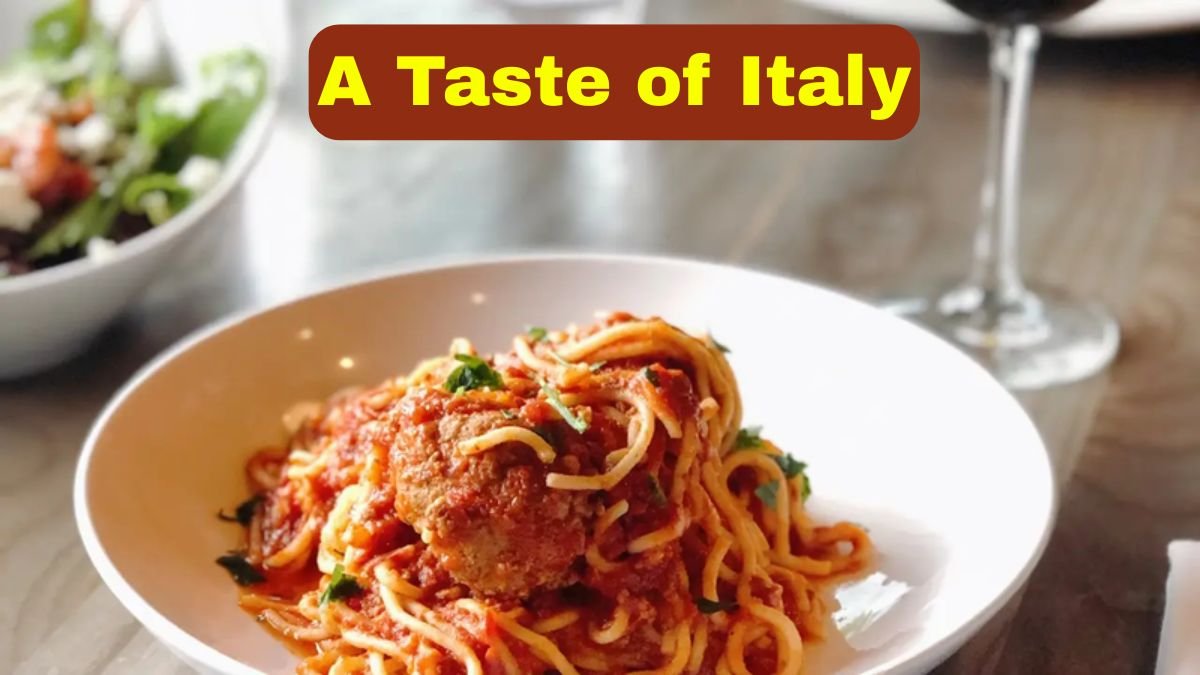A Taste of Italy: Traditional Courses You’ll Find on an Authentic Italian Dining Menu. When we hear the name “Italy”, the first thing that comes to mind is delicious pasta, the aroma of pizza and the sweetness of creamy tiramisu. But Italian food is not limited to just one dish, but it is an entire food tradition – an experience that encompasses Italy’s cultural heritage and familial warmth in every bite.
If you have ever wondered what a true Italian dining menu consists of, then this article is for you. Here we take you on a seven-course journey of a traditional Italian meal – a journey that is full of flavour, restraint and precision.
Antipasto – A hint of flavour at the beginning
Every Italian meal begins with antipasto – which literally means “before the meal”. It is a light and attractive course that acts as an appetite stimulant. This may include:
- Olives
- Sun-dried tomatoes
- Prosciutto
- Cheese slices (such as mozzarella or Parmesan)
- Bruschetta – tomatoes, garlic and olive oil on toasted bread
This course prepares both the stomach and the mind for the main meal.
Primo – The first main course
This course is light but deep in flavour. It usually includes:
- Pasta (such as spaghetti, penne, linguini)
- Risotto (a creamy rice dish)
- Gnocchi (potato and flour dumplings)
- Minestrone soup
Each region has its own special pasta. Risotto is more common in Northern Italy, while tomato-based pastas are popular in the South.
Secondo – Protein-rich main course
This is the “star” course of the meal, which includes meat or fish. Some common options are:
- Pollo alla cacchatora (chicken cooked hunter-style)
- Vitello tonnato (beef in tuna sauce)
- Brasato al barolo (beef braised in red wine)
- Grilled fish such as branzino or salmon
Vegetarian options include grilled vegetables or cheese-based dishes.
Contorno – Accompaniment to side dishes
Secondo is often served with contorno – these are side dishes, such as:
- Grilled or roasted vegetables
- Fresh salads
- Potato dishes
- Sauteed mushrooms or green leafy vegetables
Contorno is served to balance the flavor of the main dish, not to cover it up.
Insalata – A touch of freshness between meals
In Italy, salads are served after the main course – to keep the stomach light and aid digestion. It is usually a simple garden salad with a dressing of olive oil and balsamic vinegar.
Italians believe that eating salads makes the food easier to digest and keeps the stomach in balance.
Dolce – The sweet finale
Now it’s time for the most amazing part – the dessert, aka Dolce! Italian desserts are not only unique in taste, but also have the sweetness of love and tradition:
- Tiramisu – A wonderful combination of coffee and cream
- Cannoli – Crispy tubes filled with creamy filling
- Gelato – Traditional Italian ice cream
- Panna Cotta – Creamy and mildly sweet
An Italian meal is incomplete without Dolce.
Caffè & Digestivo – The Final Step
Having a small cup of espresso after a meal is part of the Italian lifestyle. It helps digest the food and enhances conversation. Some people pair it with a digestivo – a light wine such as:
- Limoncello
- Grappa
- Amaro
This course brings a dignified and balanced end to the meal.
Eating in Italy is an experience, not just a way to fill the stomach
Meals in Italy are celebrated as a family ritual. The purpose of each course is not just to taste, but to deepen relationships, pause for time and cherish life’s moments.
This dining tradition teaches us how to enjoy slow food. Without hurrying, understanding each bite, respecting the culture – that is the real Italian experience.
Conclusion
If you ever visit Italy or go to an authentic Italian restaurant, do not forget to try a full Italian course. From Antipasto to Dolce, it’s not just about eating, it’s about a beautiful and emotional journey. A traditional Italian dining menu not only lets us experience different flavors, but teaches us how to live food as an art, a tradition, and a relationship.
